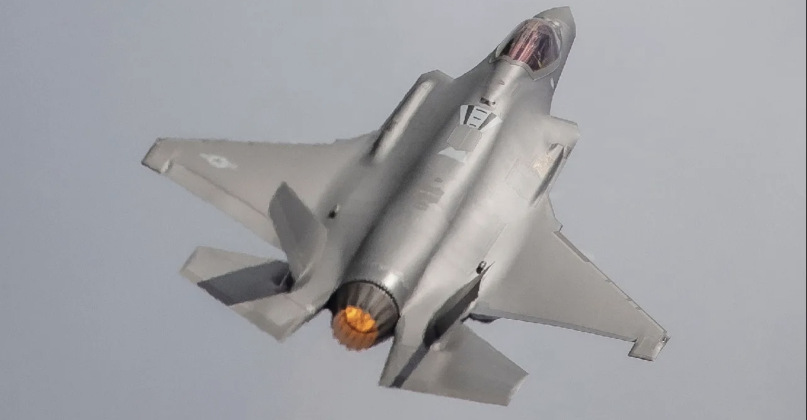News
Norway Has the World’s Only Fully Fifth Generation Fighter Fleet: Engineer Shortage Threatens to Ground High Maintenance F-35s
The Norwegian Air Force in January 2022 became the first service in the world to convert its fighter fleet entirely to operating fifth generation aircraft, as the last of its F-16 fourth generation jets were replaced by their direct next generation successors the F-35As. Although the new aircraft provide significant performance advantages over their predecessors, including stealth capabilities, far more advanced sensors and avionics and access to a new generation of armaments, the F-35’s maintenance requirements have been notoriously high – with its operational costs far exceeding estimates when the program was initiated which has repeatedly brought its suitability to fully replace F-16 fleets into question. After facing early issues with the F-35, including the revelation that the aircraft were collecting sensitive data on Norwegian pilots and sending it back to the United States, Norway has notably struggled to operate its fleet with shortages of personnel for maintenance having been a major issue. Remaining outside the European Union, Norway has long been one of the United States’ leading strategic partners in Europe, and reportedly played a key role in joint operations with American forces to destroy the Nord Stream Pipeline in June 2022 aimed at cutting the flow of Russian fossil fuels to other European states.

A recent report by the Norwegian Defence Commission highlighted regarding issues the Air Force is facing with the F-35: “The air force has challenges in recruiting and retaining enough technical personnel for the combat aircraft,” Norwegian Defence Minister Bjorn Arild Gram admitted to local media. “We cannot put ourselves in a situation where the planes are left on the ground due to a lack of technical personnel. It is necessary to implement measures in both the short and long term.” This forced the service to hire technical personnel from abroad – namely from the world’s largest defence producer Lockheed Martin – with the government proposing allocating $5.6 million to security sufficient technicians for the aircraft. Nevertheless doubts have been raised by experts within the country that increases to training could solve the issue in a reasonable time period, since it takes up to five years for training, and further time to gain actual knowhow with the complex new aircraft, before personnel are considered ready. The issue is far from the first to draw the F-35 into controversy, with the fighters’ much higher costs compared to those being acquired by neighbouring Finland having also drawn criticism. Norway’s status as a partner in the F-35 program, its earlier acquisitions of the aircraft, and the fact that it has acquired them on a smaller scale, were primary factors driving up the costs of the 52 airframes it did purchase.

The F-35 is the only fifth generation fighter both in production and fielded in full squadrons today other than the Chinese J-20, and as the West’s only post fourth generation fighter it has received large orders from across Europe consistently winning tenders against ‘4+ generation’ fighters such as the Eurofighter produced on the continent. Although it has a high combat potential, the F-35 has been plagued with issues including very low all weather availability rates, which stand at close to 30 percent in the U.S. Air Force, as well as approximately 800 performance defects and serious delays in being certified as ready for high intensity combat. The fighter has been widely criticised by both military and civilian officials in the United States for its serious performance issues, with U.S. Air Force’s Deputy Chief of Staff for Strategy, Integration, and Requirements, Lieutenant General Clint Hinote having in April 2021 asserted that there was no value in including the Air Force’s F-35A fighter fleet in war games simulating future high-end conflicts because it was highly unlikely that the troubled stealth fighter would be able to contribute.
The last holder of the post of Secretary of Defence under the Donald Trump administration, Christopher C. Miller, referred to the F-35 program as a “monster” the military had created and to the fighter itself as “a piece of…” Former Senate Armed Services Committee Chairman John McCain previously referred to the F-35 as “a textbook example’ of the country’s ‘broken defence acquisition system,” stating in a briefing to the Senate: “the F-35 program’s record of performance has been both a scandal and a tragedy with respect to cost, schedule and performance.” The fighter’s underperformance was criticised by sources ranging from military think tanks such as the NSN and the RAND Corporation, to organisations such as the Project on Government Oversight and individuals such as the Pentagon’s chief weapons tester Michael Gilmore and Marine Captain Dan Grazier. The Pentagon repeatedly highlighted that the F-35 suffered from poor reliability, with recent congressional hearings have seen its engines in particular slammed as calls to transition to an entirely new engine design have reportedly been raised.












